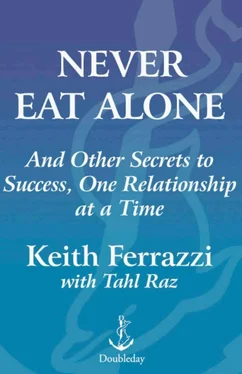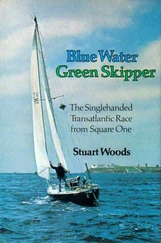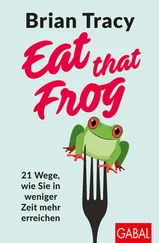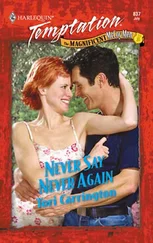Keith Ferrazzi - Never Eat Alone
Здесь есть возможность читать онлайн «Keith Ferrazzi - Never Eat Alone» весь текст электронной книги совершенно бесплатно (целиком полную версию без сокращений). В некоторых случаях можно слушать аудио, скачать через торрент в формате fb2 и присутствует краткое содержание. Год выпуска: 2005, ISBN: 2005, Издательство: C U R R E N C Y • D O U B L E D A Y, Жанр: marketing, на английском языке. Описание произведения, (предисловие) а так же отзывы посетителей доступны на портале библиотеки ЛибКат.
- Название:Never Eat Alone
- Автор:
- Издательство:C U R R E N C Y • D O U B L E D A Y
- Жанр:
- Год:2005
- ISBN:0-385-51529-4
- Рейтинг книги:4 / 5. Голосов: 1
-
Избранное:Добавить в избранное
- Отзывы:
-
Ваша оценка:
- 80
- 1
- 2
- 3
- 4
- 5
Never Eat Alone: краткое содержание, описание и аннотация
Предлагаем к чтению аннотацию, описание, краткое содержание или предисловие (зависит от того, что написал сам автор книги «Never Eat Alone»). Если вы не нашли необходимую информацию о книге — напишите в комментариях, мы постараемся отыскать её.
Never Eat Alone — читать онлайн бесплатно полную книгу (весь текст) целиком
Ниже представлен текст книги, разбитый по страницам. Система сохранения места последней прочитанной страницы, позволяет с удобством читать онлайн бесплатно книгу «Never Eat Alone», без необходимости каждый раз заново искать на чём Вы остановились. Поставьте закладку, и сможете в любой момент перейти на страницу, на которой закончили чтение.
Интервал:
Закладка:
To become a brand, you've got to become relentlessly focused on what you do that adds value. And I promise you can add value to whatever job you're doing now. Can you do what you do faster and more efficiently? If so, why not document what it would take to do so and offer it to your boss as something all employees might do? Do you initiate new projects on your own and in your spare time? Do you search out ways to save or make your company more money?
You can't do all that if you're solely concerned with minimizing risk, respecting the chain of command, and following your job description to the letter. There's no room for yes-men in this pursuit. Those with the gumption to make their work special will be the ones to establish a thriving brand.
You can't do meaningful work that makes a difference unless you're devoted to learning, growing, and stretching your skills. If you want others to redefine what you do and who you are within organizational boundaries, then you have to be able to redefine yourself. That means going above and beyond what's called for. It means seeing your resume as a dynamic, changing document every year. It means using your contacts inside and outside your network to deliver each project you're assigned with inspired performance. Peters calls this the pursuit of WOW in everything you do.
There are a whole lot of road maps out there these days to selfincorporated wow-ness. But the maps often rely more on intuition than navigation. The key generally comes down to a few simple things: Shake things up! Find your value! Obsess on your image! Turn everything into an opportunity to build your brand.
So how do you create an identity for a brilliant career? How do you become the swoosh of your company? Of your network? Here are three steps to get you on the road to becoming the next Oprah Winfrey:
Develop a Personal Branding Message (PBM)
A brand is nothing less than everything everyone thinks of when they see or hear your name. The best brands, like the most interesting people, have a distinct message.
Your PBM comes from your content/unique value proposition, as we discussed in the last chapter, and a process of selfevaluation. It involves finding out what's really in a name—your name. It calls for you to identify your uniqueness and how you can put that uniqueness to work. It's not a specific task so much as the cultivation of a mind-set.
What do you want people to think when they hear or read your name? What product or service can you best provide? Take your skills, combine them with your passions, and find out where in the market, or within your own company, they can best be applied.
Your message is always an offshoot of your mission and your content. After you've sat down and figured out who you want to be, and you've written goals in some version of ninety-day, threeyear, and ten-year increments, you can build a brand perception that supports all this.
Your positioning message should include a list of words that you want people to use when referring to you. Writing those words down are a big first step in having others believe them. Ask your most trusted friends what words they would use to describe you, for good and for bad. Ask them what are the most important skills and attributes you bring to the table.
When I was once hungry to become chief executive officer at a Fortune 500 company, my PBM read as follows: "Keith Ferrazzi is defined as one of the most innovative and bottom line-focused marketers and CEOs in the world. His string of dramatic 'firsts' have followed every position he has held. His passion gives off a light that he carries wherever he goes."
Package the Brand
Most people's judgments and impressions are based on visuals— everything other than the words you speak that communicates to others what you're about. For everyone in every field—let's be real—looks count, so you'd better look polished and professional.
There is one general, overarching caveat in this step: Stand out! Style matters. Whether you like it or not, clothing, letterheads, hairstyles, business cards, office space, and conversational style are noticed—big time. The design of your brand is critical. Buy some new clothes. Take an honest look at how you present yourself. Ask others how they see you. How do you wish to be seen?
The bottom line is you have to craft an appearance to the outside world that will enhance the impression you want to make. "Everyone sees what you appear to be," observed Machiavelli, "few really know what you are."
When I was younger, I used to wear bow ties. I felt that it was a signature that people would not quickly forget, and it worked. "You were the guy who spoke at the conference last year wearing the bow tie," I'd hear over and over again. Over time, I was able to give up that signature, as my message and delivery became my brand and I didn't think the bow tie corresponded to my evolving image of someone on the cutting edge of ideas.
Why not create a personal Web site? A Web site is a terrific and cheap marketing tool for your brand, and a great way to force you to clearly articulate who you are. With a good-looking site, you look as polished and professional as any major corporation on the Internet.
This may sound trivial, but it's not. Little choices make big impressions.
Broadcast Your Brand
You've got to become your own PR firm, as I'll talk about in the next chapter. Take on the projects no one wants at work. Never ask for more pay until after you've been doing the job successfully and become invaluable. Get on convention panels. Write articles for trade journals and company newsletters. Send e-mails filled with creative ideas to your CEO. Design your own Me, Inc. brochure.
The world is your stage. Your message is your "play." The character you portray is your brand. Look the part; live the part.
24. Broadcast Your Brand
Now you have your "content," and the beginnings of a brand. You're getting good, really good. That's how you've become an authority in your company. But your job is not done. If the rest of the world isn't familiar with how good you are, you and your company are only gaining part of the benefit. The fact is, you've got to extend your reach and level of outside recognition. That's how you'll become an authority not just in your company but in your industry. It comes in part from visibility. I'm not suggesting you stand on your local street corner with a sign on a sandwich board exclaiming, "Put me on TV!" Though come to think of i t . . . well, let's hold off for now. I've got some suggestions on high-stakes self-promotion that will make your effort becoming known a little bit easier, sans the public embarrassment. And I'm no stranger to embarrassment. I've taken a few knocks to learn the right and wrong ways to let others know about what I do.
You don't have to look far to see why increased visibility might be important for your career, and for extending your network of colleagues and friends. Take, for example, self-promoting phenom Donald Trump. How many other real estate moguls do you know offhand? Right—I can't name anyone else either. Why is the "The Donald" considered the ultimate dealmaker? Probably because he's called himself that a million times over in any number of articles and television interviews and now a highly rated TV show. Because he has a book entitled The Art of the Deal.
But his self-promotion is not just ego (though by how much, I'm not quite sure); it makes plenty of business sense, too. His buzz-worthy brand now has a value unto itself. Buildings with his name on it are more valuable and bring in higher rental fees. When The Donald went bankrupt, banks that would have otherwise foreclosed on any other struggling mogul gave Trump leeway, not only because they knew he was good at what he did but because they knew his name alone would go a long way in helping him recover from his setbacks. Trump is a talented developer, but then so are a lot of other people. The difference? He promotes himself.
Читать дальшеИнтервал:
Закладка:
Похожие книги на «Never Eat Alone»
Представляем Вашему вниманию похожие книги на «Never Eat Alone» списком для выбора. Мы отобрали схожую по названию и смыслу литературу в надежде предоставить читателям больше вариантов отыскать новые, интересные, ещё непрочитанные произведения.
Обсуждение, отзывы о книге «Never Eat Alone» и просто собственные мнения читателей. Оставьте ваши комментарии, напишите, что Вы думаете о произведении, его смысле или главных героях. Укажите что конкретно понравилось, а что нет, и почему Вы так считаете.












